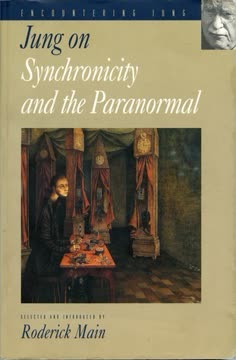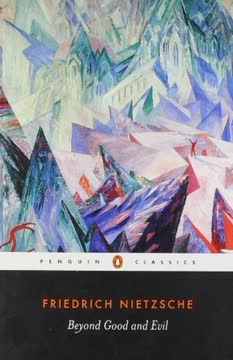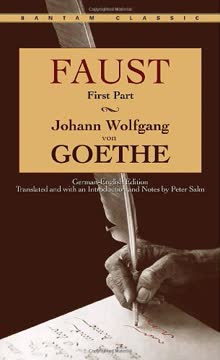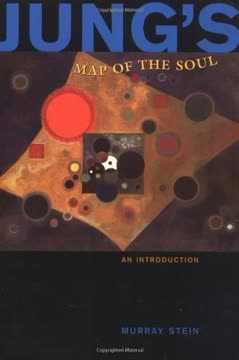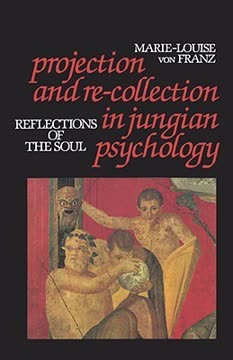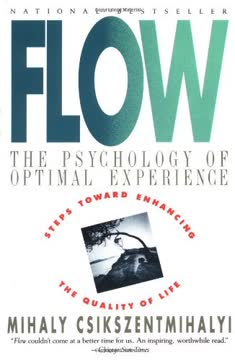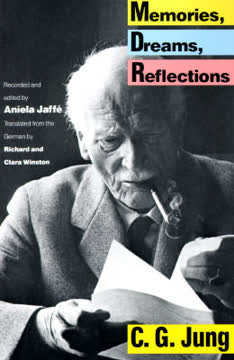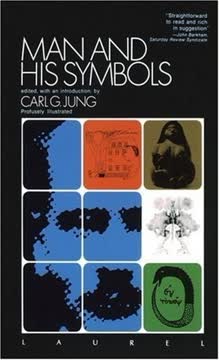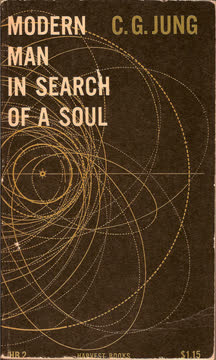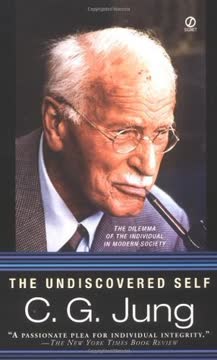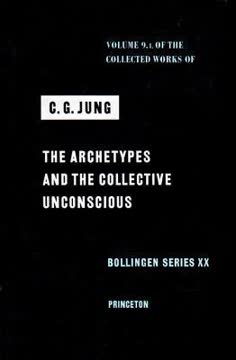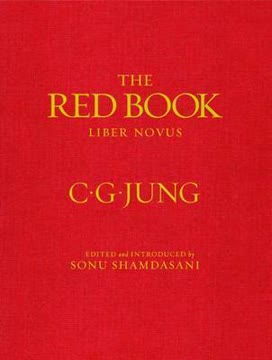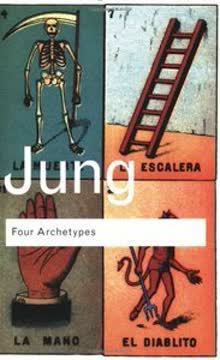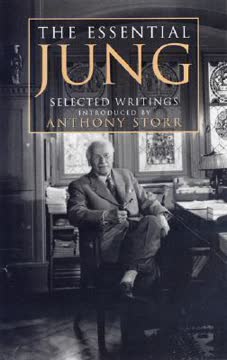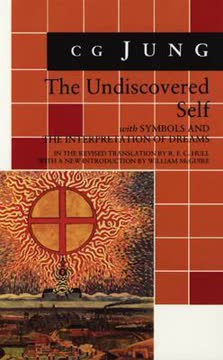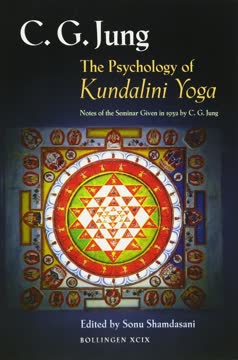Key Takeaways
1. Jung's Deep Roots in Paranormal Experience
The reality of these events, he says, was 'taken for granted in the world of my childhood'.
A paranormal milieu. C.G. Jung grew up in a Swiss countryside steeped in stories of uncanny happenings like prophetic dreams, clocks stopping at death, and objects breaking inexplicably. His own family had a history of such experiences, including a clairvoyant grandmother and a mother who kept a diary of strange occurrences. This early environment normalized the idea that phenomena defying rational explanation were real.
Dual personality. Jung perceived himself as having a dual personality: Personality No. 1, focused on social integration, and Personality No. 2, ancient, deeply connected to nature, dreams, and the divine. This inner tension between rational understanding and acceptance of irrational experiences shaped his lifelong engagement with the paranormal. His personal experiences were not just external observations but deeply intertwined with his inner psychological landscape.
Beyond mere superstition. Unlike many contemporaries who dismissed such events as mere superstition or pathology, Jung felt compelled to understand their underlying reality. His early exposure fostered a curiosity and openness that would later become foundational to his psychological theories. He saw these phenomena not just as oddities but as potential keys to understanding the objective nature of the human psyche.
2. Early Encounters Pushed Jung Towards Psychology
All in all, this was the one great experience which wiped out all my earlier philosophy and made it possible for me to achieve a psychological point of view.
Unexplained physical events. Two incidents in his youth profoundly influenced Jung: a walnut table splitting with a loud bang and a steel bread knife shattering inexplicably in a closed drawer. These events, occurring weeks before he began attending seances, seemed connected and defied conventional explanation, challenging his existing philosophical views. They impressed upon him the existence of phenomena beyond simple cause and effect.
Spiritualistic investigations. These strange occurrences contributed to his decision to study psychiatry, a field then widely disdained. His doctoral dissertation, "On the Psychology and Pathology of So-Called Occult Phenomena" (1902), was based on observations of his medium cousin. While analyzing her trance states psychiatrically, he also saw the secondary personalities as potentially therapeutic, representing attempts of a future character to emerge.
Objective facts of the psyche. Jung's work with his medium cousin, though later revealed to be more personally involved than initially presented, was a pivotal experience. It provided him with what he considered "objective facts about the human psyche," particularly its dissociability and unconscious functioning. This early research prefigured his later concepts of complexes and archetypes, demonstrating the profound impact of paranormal investigation on his psychological framework.
3. The Break with Freud: A Clash Over the Occult
While Freud was going on this way, I had a curious sensation. It was as if my diaphragm were made of iron and were becoming red-hot - a glowing vault.
Freud's initial skepticism. Jung's continued preoccupation with the paranormal became a point of tension with Sigmund Freud, who initially viewed the field with suspicion. Freud urged Jung to make the sexual theory a bulwark against the "black tide of mud... of occultism." This fundamental difference in perspective foreshadowed their eventual divergence.
The bookcase incident. A dramatic incident in 1909 highlighted this tension: during an argument about paranormal phenomena, a loud report occurred in Freud's bookcase. When Freud dismissed it causally, Jung predicted another report, which immediately happened, much to Freud's consternation. This event, occurring shortly after Freud had symbolically adopted Jung as his successor, symbolized the inevitable split between them, rooted in their differing views on the significance of the paranormal.
Broadening psychoanalysis. Jung felt that psychoanalysis needed to broaden its theoretical basis to account for spiritualistic phenomena that could not be adequately explained by sexuality alone. While Freud's resistance softened over time, even attending seances himself, he was unwilling to publicly embrace the full implications of Jung's interests. This divergence over the reality and importance of paranormal phenomena was a major factor in the dissolution of their relationship.
4. Synchronicity: An Acausal Principle of Meaningful Coincidence
By synchronicity I mean the occurrence of a meaningful coincidence in time.
Beyond chance and causality. Jung introduced the concept of synchronicity to describe meaningful coincidences that cannot be explained by conventional causality. These are not merely improbable chance groupings but events connected by shared meaning. Synchronicity is proposed as a principle of acausal connection, complementary to causality.
Three forms of synchronicity. Jung identified three categories:
- A psychic state coinciding with a simultaneous external event (e.g., the scarab incident).
- A psychic state coinciding with a simultaneous external event at a distance, verifiable later (e.g., Swedenborg's fire vision).
- A psychic state coinciding with a future external event, verifiable later (e.g., the student's dream of Spain).
Relativity of time and space. While initially emphasizing simultaneity, Jung later characterized synchronicity as a "psychically conditioned relativity of time and space." This idea, influenced by parapsychology, suggests that within the unconscious psyche, space and time are elastic and can be transcended, allowing for knowledge of distant or future events. The meaningful connection, not the causal link, is the defining feature.
5. Meaningful Coincidences Reveal Archetypal Activity
by far the greatest number of synchronistic phenomena that I have had occasion to observe and analyse can easily be shown to have a direct connection with the archetype
Archetypal foundation. Jung observed that synchronistic events often occur in the context of an activated archetype. The shared meaning that links the coinciding events derives from an underlying archetypal pattern. This connection provides a psychological framework for understanding the significance of these acausal occurrences.
Clinical relevance. In his therapeutic practice, Jung noted the frequency and meaningfulness of coincidences for his patients, often occurring at psychological impasses. The scarab incident, where a patient's dream of a scarab coincided with a real beetle appearing, was a paradigm case. This synchronicity, linked to the rebirth archetype, helped break the patient's intellectual resistance and further her individuation process.
Beyond subjective interpretation. While synchronicities are meaningful to the experiencer, Jung also suggested an objective, transcendental level of meaning. This archetypal meaning is a priori to human consciousness and can manifest simultaneously in both psychic and physical realms. The emotional charge or "numinosity" accompanying synchronicities also stems from the presence of an activated archetype.
6. Parapsychology Points to Psyche's Space-Time Relativity
The result of the spatial experiment proves with tolerable certainty that the psyche can, to some extent, eliminate the space factor.
Rhine's experimental evidence. Jung was significantly influenced by J.B. Rhine's parapsychological experiments on extrasensory perception (ESP) and psychokinesis (PK). Rhine's statistically significant results, particularly the lack of decline with increased distance or time, provided scientific support for the idea that the psyche could operate beyond conventional space-time limitations. This reinforced Jung's hypothesis of a "psychically conditioned relativity of time and space."
Affectivity as a condition. Rhine's work also highlighted the "decline effect," where results diminished as subjects lost interest. Jung interpreted this as evidence that affectivity or emotional engagement is a necessary condition for synchronistic phenomena to occur. This emotional state often signals the presence of an activated archetype, linking experimental parapsychology back to Jung's clinical observations.
Beyond transmission. Jung argued that Rhine's results challenged the idea of energy transmission as an explanation for these phenomena. Since causality is bound by space and time, and these experiments suggested space-time relativity, a causal explanation seemed insufficient. Instead, he proposed that these were acausal, meaningful coincidences, or synchronistic events, demonstrating the psyche's potential to transcend spatio-temporal barriers.
7. Modern Physics Offers Analogies for Psyche and Synchronicity
It was Einstein who first started me off thinking about a possible relativity of time as well as space, and their psychic conditionality.
Einstein's influence. Jung's interactions with Albert Einstein in Zurich sparked his initial thoughts on the relativity of time and space and their potential psychic conditionality. This early stimulus laid the groundwork for his later theoretical formulations on synchronicity, connecting psychological concepts with cutting-edge physics.
Quantum mechanics parallels. Developments in quantum mechanics, particularly Niels Bohr's principle of complementarity and the probabilistic nature of subatomic events, provided further analogies for Jung. He saw causality and acausality as complementary principles, much like the wave-particle duality in physics. The inability to predict individual subatomic events deterministically suggested to him that acausality exists at a fundamental level of reality.
Collaboration with Pauli. Jung's friendship and collaboration with physicist Wolfgang Pauli were crucial in developing these ideas. Pauli, who experienced synchronicities himself, helped Jung formulate the complementary relationship between causality and synchronicity. Their joint publication, "The Interpretation of Nature and the Psyche," explored the parallels between physics and psychology, suggesting a deeper, psychoid reality underlying both.
8. Ancient Divination as Synchronistic Experimentation (I Ching & Astrology)
The science of the I Ching is based not on the causality principle but on one which - hitherto unnamed because not familiar to us - I have tentatively called the synchronistic principle.
I Ching as acausal science. Jung saw ancient divinatory systems like the I Ching (Book of Changes) as based on a principle fundamentally different from Western causality. He described the I Ching as a science of "synchronistic principle," where the chance arrangement of stalks or coins reflects the quality of the moment. His personal experiments with the I Ching yielded "amazing coincidences" that reinforced his idea of acausal parallelism.
Astrology and qualitative time. Jung's long-standing interest in astrology also contributed to his thinking on synchronicity. He initially saw astrology as demonstrating that moments in time possess specific qualities, which are reflected in events or individuals born at that time. While later questioning the "qualitative time" concept as tautological, his practical use of horoscopes for psychological diagnosis provided data suggesting meaningful, non-causal connections.
Experimental approach to the irrational. Both the I Ching and astrology offered Jung methods for generating experiences of meaningful coincidence, providing a context for investigating the dynamics of synchronicity. He saw these systems as potentially revealing archetypal patterns and suggesting a connection between numerical principles and synchronicity, offering a historical precedent for recognizing acausal connections.
9. Jung's Astrological Experiment: Chance Mimicking Meaning
The chance arrangement of the marriage horoscopes... suited the sanguine expectations of the research workers and produced an overall picture that could scarcely have been improved upon from the standpoint of the astrological hypothesis.
Testing astrological tradition. To investigate synchronicity quantitatively, Jung conducted an experiment analyzing marriage horoscopes, looking for traditional astrological marriage aspects (sun-moon, moon-moon, moon-ascendant conjunctions). He collected nearly 1000 horoscopes and analyzed them in batches. The results, while not statistically significant enough to prove astrological causality, showed the traditional aspects appearing as the most frequent maxima in each batch.
Statistics and synchronicity. Jung's use of statistics was unconventional; he used them to define the realm where synchronistic phenomena are most likely to occur (i.e., within the bounds of chance). The fact that the random results "imitated accidentally the ideal answer to astrological expectation" was, for him, a synchronistic phenomenon. It was a meaningful coincidence that looked like a causal arrangement but occurred by chance.
Psychic participation. The unexpected correspondence between the random results and astrological expectations, coupled with errors in calculation that favored astrological outcomes, suggested to Jung the possibility of psychic participation. He hypothesized that the astrologer's (or researcher's) psychic state could influence the arrangement of the material, demonstrating a "secret, mutual connivance... between the material and the psychic state." This highlighted the divinatory, rather than purely scientific, aspect of astrology.
10. Synchronicity Offers New Perspectives on Mind, Matter, and the Unknown (UFOs, Death)
Synchronistic phenomena prove the simultaneous occurrence of meaningful equivalences in heterogeneous, causally unrelated processes; in other words, they prove that a content perceived by an observer can, at the time, be represented by an outside event, without any causal connection.
Unus Mundus. Synchronicity led Jung to speculate on the nature of reality itself, suggesting an "as yet unknown substrate possessing material and at the same time psychic qualities." This concept of the unus mundus (one world) posits a unitary background to existence where psyche and matter are not separate but different aspects of the same reality. Synchronicity, as an acausal connection, points towards this underlying unity.
Mind-body relationship. The theory offers a new way to view the mind-body problem. Instead of a causal link, the relationship might be synchronistic, with psychic and physical processes correlating meaningfully without direct interaction. Jung explored this in relation to psychosomatic phenomena and the possibility of a "subtle body" mediating between psyche and physical body.
Beyond the veil. Synchronicity provides a framework for understanding anomalous phenomena like UFOs and intimations of life after death. UFO reports, with their physical and psychic aspects, could be synchronistic events where an external phenomenon coincides with archetypal projections. Experiences related to death, such as precognitive dreams or apparitions, suggest that the psyche may exist in a continuum outside space and time, partaking in a form of "eternity."
11. Synchronicity as a Complementary Principle to Causality
Causality is the way we explain the link between two successive events. Synchronicity designates the parallelism of time and meaning between psychic and psychophysical events, which scientific knowledge so far has been unable to reduce to a common principle.
Two explanatory principles. Jung proposed synchronicity as a hypothetical factor "equal in rank to causality as a principle of explanation." While causality accounts for constant connections through effect, synchronicity accounts for inconstant connections through contingency, equivalence, or meaning. Together, these two principles offer a more complete account of the connections between events in the world.
Beyond statistical truth. Modern physics showed natural laws to be statistical truths, allowing for acausal events at the microphysical level. Jung argued that this statistical nature implies the possibility of acausal events at the macrophysical level as well. Synchronicity fills this gap, representing the "background of acausality, freedom, and meaningfulness" that complements the deterministic, mechanistic view provided by causality.
An empirical concept. Despite its profound implications, Jung insisted that synchronicity was an "empirical concept," not a philosophical view, based on observed facts and experiments (like Rhine's). While acknowledging that some aspects touch on metaphysics, he viewed it primarily as an intellectually necessary principle for understanding phenomena that causality alone cannot explain, shifting focus from how events happen to what they mean.
Last updated:
FAQ
What is "Jung on Synchronicity and the Paranormal" by C.G. Jung about?
- Exploration of the Paranormal: The book delves into Jung’s lifelong investigation of paranormal phenomena—events that defy conventional rational explanation—and their impact on his psychological theories.
- Central Theory of Synchronicity: It introduces and elaborates on Jung’s theory of synchronicity, which describes meaningful coincidences that lack a causal relationship.
- Integration of Diverse Disciplines: Drawing from Jung’s letters, essays, and collaborations, the book weaves together insights from psychology, parapsychology, physics, alchemy, and esoteric traditions.
- Personal and Historical Context: The narrative is enriched by Jung’s personal experiences and the scientific developments of his era, providing a comprehensive view of his evolving ideas.
Why should I read "Jung on Synchronicity and the Paranormal" by C.G. Jung?
- Unique Psychological Perspective: The book offers a rare, rigorous attempt to make sense of paranormal phenomena within a psychological framework, blending scientific inquiry with openness to mystery.
- Broad Relevance: Jung’s writings have influenced psychotherapists, parapsychologists, spiritual seekers, and general readers, making this a foundational text for anyone interested in the intersection of psychology and the paranormal.
- Historical and Scientific Depth: It situates Jung’s ideas within the context of quantum physics, parapsychological experiments, and his collaborations with figures like Wolfgang Pauli, adding credibility and depth.
- Insight into Archetypes and the Unconscious: Readers gain a deeper understanding of Jungian concepts such as archetypes, the collective unconscious, and the mind-body relationship.
What are the key takeaways from "Jung on Synchronicity and the Paranormal" by C.G. Jung?
- Synchronicity as Acausal Principle: Jung’s theory of synchronicity challenges the dominance of causality by proposing that meaningful coincidences can occur without causal links.
- Paranormal Phenomena as Meaningful: Events like telepathy, precognition, and hauntings are explored as manifestations of the collective unconscious and synchronistic principles.
- Bridging Science and Spirituality: The book argues for a unified reality (unus mundus) underlying both psyche and matter, drawing parallels between psychology and modern physics.
- Therapeutic and Spiritual Implications: Synchronicity is shown to have practical significance in psychotherapy and spiritual experience, offering new ways to understand transformation and individuation.
How does C.G. Jung define synchronicity in "Jung on Synchronicity and the Paranormal"?
- Meaningful Coincidence: Synchronicity is defined as the occurrence of meaningful coincidences in time that lack a causal relationship but are connected by meaning.
- Acausal Connecting Principle: It is presented as an acausal principle that complements causality, accounting for connections based on shared meaning rather than cause and effect.
- Three Forms of Synchronicity: Jung identifies three types: simultaneous psychic and objective events, psychic states reflecting distant events, and present psychic states corresponding to future events.
- Empirical and Philosophical Basis: The concept is supported by personal experiences, parapsychological research, and philosophical influences from quantum physics and Chinese philosophy.
What role do archetypes play in Jung’s theory of synchronicity in "Jung on Synchronicity and the Paranormal"?
- Source of Shared Meaning: Archetypes are collective unconscious patterns that provide the shared meaning necessary for events to be considered synchronistic.
- Emotional and Numinous Charge: The activation of archetypes during synchronistic events is accompanied by a powerful emotional intensity, making these experiences especially significant.
- Facilitation of Individuation: Synchronicities involving archetypes help individuals overcome psychological impasses and support the process of individuation by bringing unconscious material to consciousness.
- Manifestation in Both Psyche and Matter: Archetypes can appear in both psychic experiences and physical events, reinforcing the unity of psyche and matter.
How does "Jung on Synchronicity and the Paranormal" relate astrology and the I Ching to synchronicity?
- Astrology as Qualitative Time: Jung interprets astrology as reflecting the quality of moments in time, not as a causal science, but as a system of meaningful correspondences.
- I Ching as Experimental Tool: He uses the I Ching as a practical method for generating synchronistic experiences, finding that its oracular answers often align meaningfully with the questioner’s state.
- Divinatory Rather Than Scientific: Both astrology and the I Ching are seen as divinatory systems that illustrate the dynamics of synchronicity rather than operating through causal mechanisms.
- Psychic Participation: Jung’s experiments suggest that the psychic involvement of the practitioner plays a crucial role in the effectiveness of these systems.
What evidence from parapsychology does Jung use to support synchronicity in "Jung on Synchronicity and the Paranormal"?
- J.B. Rhine’s ESP Experiments: Jung references Rhine’s card-guessing and psychokinesis studies, which produced statistically significant results that challenge conventional causality.
- Transcending Space and Time: These experiments suggest that psychic phenomena can operate independently of normal spatial and temporal constraints.
- Emotional State Influence: Jung notes that the success of such phenomena often depends on the subject’s emotional state, such as faith or optimism.
- Empirical Support for Acausality: The findings provide empirical grounding for the existence of acausal connections in nature.
How does C.G. Jung’s personal experience influence his views in "Jung on Synchronicity and the Paranormal"?
- Early Exposure to the Paranormal: Jung’s family background included stories of ghosts and clairvoyance, and his own childhood experiences fostered openness to the paranormal.
- Mediumship and Seances: His doctoral research on mediumistic trance phenomena, particularly involving his cousin, shaped his understanding of the unconscious and psychic dissociation.
- Critical Life Events: Paranormal events marked significant moments in Jung’s life, such as his break with Freud and his near-death experience, reinforcing his belief in the meaningfulness of such phenomena.
- Motivation for Theoretical Work: These personal experiences motivated Jung to develop his theory of synchronicity and explore its implications for psychology.
How does "Jung on Synchronicity and the Paranormal" address the relationship between psyche, matter, and physics?
- Psychophysical Unity: Jung proposes that psyche and matter are not fundamentally separate but share a common underlying reality, which he calls the unus mundus.
- Influence of Modern Physics: He draws on quantum mechanics and relativity to argue that space, time, and causality are relative, allowing for phenomena that transcend these categories.
- Energy Analogy: Jung uses the concept of energy metaphorically to describe psychic activity, suggesting that psychic and physical energies may be different manifestations of a single source.
- Bridging Science and Psychology: The book attempts to bridge the gap between scientific and psychological explanations of reality.
What is the significance of paranormal phenomena like ghosts, mediumship, and UFOs in "Jung on Synchronicity and the Paranormal"?
- Manifestations of the Unconscious: Jung sees ghosts and apparitions as archetypal figures from the unconscious that can sometimes have physical effects.
- Mediumship as Psychological Phenomenon: He emphasizes the role of trance states and lowered conscious control in facilitating the emergence of archetypal content during mediumship.
- UFOs as Modern Myths: Jung interprets UFO phenomena as synchronistic events with both psychic and possible physical components, reflecting collective unconscious processes and mythic symbolism.
- Scientific Challenges: He acknowledges the difficulty of scientifically verifying such phenomena but considers them crucial for understanding the psyche’s relation to matter.
How does "Jung on Synchronicity and the Paranormal" address visions, altered states, and the possibility of life after death?
- Visions as Archetypal Encounters: Jung describes his own visionary experiences as encounters with archetypal images, often involving symbolic death and rebirth.
- Transcendence of Space and Time: He suggests that parts of the psyche can operate beyond normal space-time constraints, as seen in near-death experiences and precognitive dreams.
- Continuity of Psyche: While empirical proof is lacking, Jung entertains the possibility that the psyche continues after physical death, supported by parapsychological evidence and symbolic dreams.
- Spiritual and Psychological Implications: These experiences highlight the depth and complexity of the unconscious and its potential for transformation.
What are the main criticisms and philosophical implications of Jung’s theory of synchronicity in "Jung on Synchronicity and the Paranormal"?
- Empirical and Metaphysical Tensions: Critics argue that some aspects of Jung’s theory, such as the psychoid archetype, cross into metaphysics and are difficult to empirically verify.
- Challenge to Causality: Synchronicity questions the absolute validity of causality, suggesting the need for a broader scientific and philosophical framework.
- Simultaneity and Psychic States: Jung’s insistence on simultaneity in synchronicity is problematic, especially for precognitive events, complicating the concept’s application.
- Unity of Psyche and Matter: The theory supports a monistic view of reality, emphasizing the importance of meaning and archetypes as organizing principles for both psychic and physical phenomena.
Review Summary
Jung on Synchronicity and the Paranormal receives mostly positive reviews, with readers praising Jung's exploration of paranormal experiences and synchronicity. Many find the book fascinating, offering insights into Jung's thoughts on spirituality, quantum mechanics, and the limitations of rationalistic science. Readers appreciate Jung's personal anecdotes and informal writing style in letters. Some find parts of the book challenging to read, particularly the academic sections. Overall, reviewers value the book for its unique perspective on unexplained phenomena and Jung's contributions to psychology and parapsychology.
Similar Books
Download PDF
Download EPUB
.epub digital book format is ideal for reading ebooks on phones, tablets, and e-readers.
